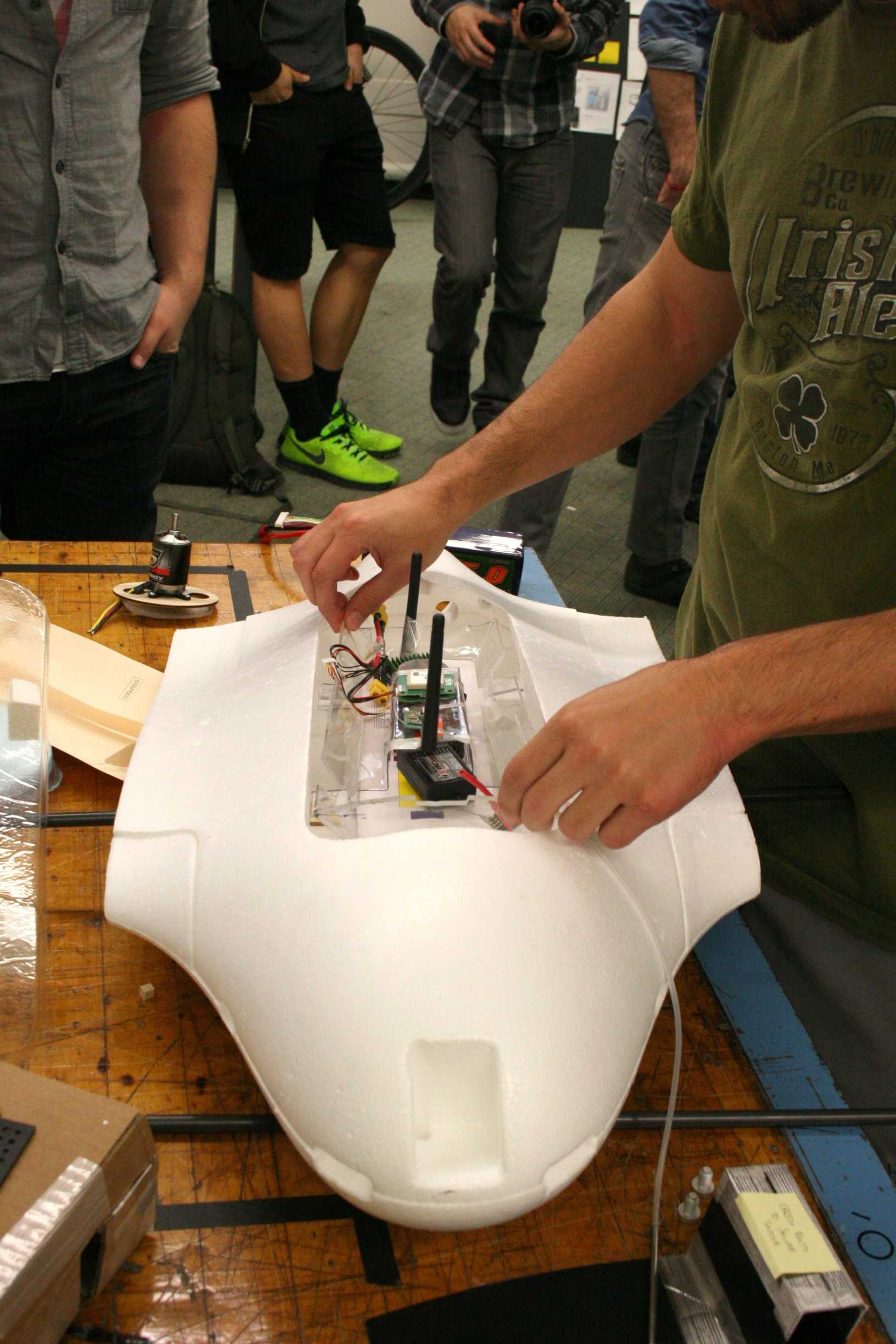Design students at Cal State Long Beach are working to overcome the stigma attached to drone aircraft by designing an affordable and simple unmanned aerial vehicle for use in research, emergency services and entertainment.
The Geospatial Research and Mapping project, or GRAM, is a venture of an industrial design senior studio class in collaboration with the geography and anthropology departments.
More than 30 students and staff are midway through designing a prototype of an unmanned aerial vehicle (UAV) that, unlike other drone models available in the market, is cheap, easy to assemble and can be customized for whatever purpose the user desires, according to senior industrial design student Scott Lee.
Angela Wang, director of publications for the project, said GRAM’s goal is to create a middle ground between very expensive drones and the cheap and ineffective hobbyist models.
“Our design is based on the cheap DIY [do-it-yourself] open source models,” Wang said. “Our aim is to create a model that can be easily customized, [so] if the user wants to insert a different camera, or a bigger motor, they will be easily able to do that.”
Dubbing the model ACE, or All Capturing Eye, students have divided into four groups to work on all aspects of the project: launch and recovery, packaging, user experience and documentation.
The packaging unit has been charged with creating a simpler design for the drone to allow for easier assembly. Lee, leader of the user experience group, said existing models are very difficult for the average person to put together.
“People who would use this probably don’t know how to assemble the electronics and the plane itself, and they don’t care how it works, just that it does work,” Lee said. “Our goal is to produce a ‘plug and play’ model. People will see how easy and useful it is.”
According to Max Beach, who teaches the senior studio class, the project originated after the geography and anthropology departments expressed a wish for an affordable and simple remote aircraft for mapping and surveying purposes.
Beach said he took the idea to his class and the students then expanded the scope of the project so that it could be used to film sporting events, help in search-and-rescue missions, survey forest fires and assist in news media coverage of dangerous or remote areas.
Despite that the prototype is still in its early design phase, Beach said such a product would have a myriad of real-world applications and benefits across many areas.
“This is a product that can be successful in commercial markets,” Beach said. “It’s cheaper and much easier to use than the main model in the market, the Gatewing, which retails for about $50,000.”
The design process will wrap up by mid-March, with the team hoping to have a prototype model ready for presentation and display at the design department’s Senior Exhibition in May.




